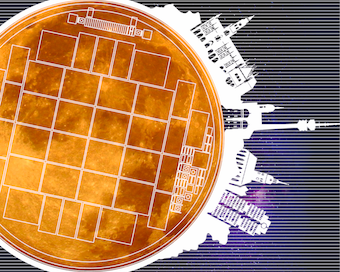Speaker
Description
The Large Hadron Collider Beauty (LHCb) detector is a flavour physics detector, designed to detect decays of b- and c-hadrons for the study of CP violation and rare decays. At the end of Run-II, many of the LHCb measurements will remain statistically dominated. In order to increase the trigger yield for purely hadronic channels, the hardware trigger will be removed and the detector will operate at 40 MHz in combination with the five-fold increase in luminosity.
The upgraded VELO modules will each be equipped with 4 hybrid pixel tiles, each read out with by 3 VeloPix ASICs. The silicon sensors must withstand an integrated fluence of up to 8$\times 10^{15} 1 MeV n_eq/cm^{2}$, equivalent to 400MRad TID. The tiles are mounted onto a cooling substrate composed of thin silicon plates with embedded micro-channels that allow the circulation of liquid $CO_2$. The highest occupancy ASICs have hit rates of 900Mhit/s and produce a data rate of over 15Gbit/s. The back-end readout is performed by the LHCb's common readout board which is used to time reorder the data-driven packets generated by the ASICs.
An additional challenge is the non uniform nature of the radiation damage, which requires a high voltage (1000V) tolerant design. A collection of preliminary results will be presented, as well as a comparison of the performance of the different sensor prototypes before and after irradiation.
The design of the complete VELO upgrade system will be presented together with the latest results from the R\&D.
